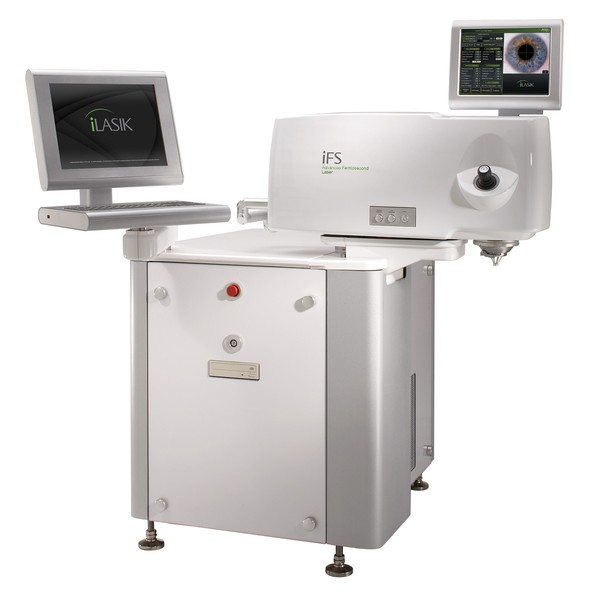Our Lasers
Here at Tennessee Valley Laser Center we use the iFS Advanced Femtosecond Laser and the STAR S4 IR Excimer Laser to correct nearsightedness, farsightedness, and astigmatism. These lasers are the newest in laser vision correction to date and allow us to provide precise, safe and effective vision correction. These lasers and their associated technologies are used for military pilots and astronauts, who demand the clearest, most precise vision possible.

The iFS Laser gives our surgeons greater control for maximum customization of your procedure allowing them the0 ability to create accurate, reproducible incisions in an almost limitless range of shapes and patterns. This means fewer possible complications and faster visual recovery.
The STAR S4 IR Excimer Laser System, allows our surgeons to optimize treatment times and minimize the thermal effects on the cornea as well. It also improves treatment accuracy by automatically adjusting to compensate for patient movement. In addition, the laser tracks the natural pupil, which eliminates the need for dilation.
The IntraLase Technology built-in to our iFS Laser allows us to use a 100% blade-free approach to creating your LASIK flap – the thin flap of tissue that the doctor creates to perform your LASIK procedure. Millions of procedures have been performed safely and effectively using IntraLase Technology.
During the procedure, tiny pulses of laser light (a quadrillionth of a second each) pass harmlessly through the outer portion of your cornea and form a uniform layer of microscopic bubbles just beneath the surface of your eye. The flap creation process takes about 15 to 20 seconds per eye and the entire LASIK procedure takes about 10 minutes. When it’s time for your LASIK treatment to be performed, your doctor easily lifts the flap to apply the LASIK treatment.
Using IntraLase Technology delivers outstanding results and has been shown to improve outcomes for more patients 1. In a clinical survey of LASIK patients who had their LASIK flaps created using a blade in one eye and the IntraLase Technology in the other, the vision in the IntraLase-treated eye was preferred 3-to-1 (among those who stated a preference) 2, 3.
(1) Tanna M, Schallhorn SC, Hettinger KA. Femtosecond laser versus mechanical microkeratome: a retrospective comparison of visual outcomes at 3 months. J Refract Surg. 2009; 25 (7 Suppl): S668-71.
(2) Durrie DS. Randomized prospective clinical study of LASIK: Intralase versus mechanical keratome. Subsets presented at: Meeting of the International Society of Refractive Surgery of the American Academy of Ophthalmology; November 14-15, 2003; Anaheim, CA: American Society of Cataract and Refractive Surgery Symposium; May 1-5, 2004; San Diego, CA; Refractive Surgery 2004; Interntional Refractive Surgery: Science and Practice; October 22-23, 2004; New Orleans, LA; American Society of Cataract and Refractive Surgery Symposium; April 15-20, 2005; Washington, DC.
(3) Mahdavi S. IntraLase: coming of age. Cataract Refract Surg Today. 2005:117-20.
Ready to See the Difference? Request a free LASIK evaluation.
Contact us today so we can help you take the next step toward experiencing clear natural vision without glasses or contact lenses. Call (865) 251-0336 or fill in the form today!


